Hope rises out of the ashes in East Gippsland
From a family saving their small town’s racetrack from bushfires to the relentless search for a young boy lost in the bush, stories of survival despite the odds in East Gippsland are testament to a resilient region, writes Andrew Rule.
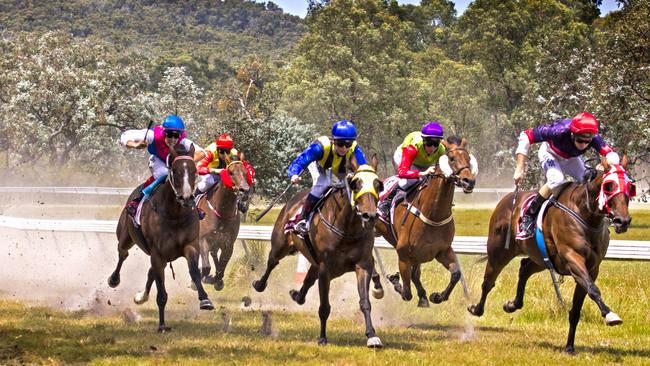
VIC News
Don't miss out on the headlines from VIC News. Followed categories will be added to My News.
This Herald Sun bushfire article is free to read for all. To support our newsroom and local journalism, subscribe to the Herald Sun here.
A month after the fires that torched East Gippsland, two stories of hope come from one devastated district. One is about a little boy lost and found. The other about Victoria’s most distant racecourse being saved by a family who also saved their racehorse.
Banjo Paterson would have loved it.
The boy was lost in blackened bush about 30km across country from the racetrack at Canni Creek. The Queen has Royal Ascot. The Buchan and Gelantipy Race Club has Canni Creek. It’s as Australian as kangaroos hopping up the straight, which happens enough that stewards sometimes have to shoo them off before a race. Flemington it ain’t.
The permanent population of Canni Creek is nine, mostly Sandys, who have been around those parts a long time. When the New Year fires hit, two Sandys and an in-law rushed to save the racetrack.
As Peter Sandy tackled the fire with son Michael and an in-law, Mitchell Hynes, his wife Robyn had to look after their galloper Firefree — “Jeffrey” to his mates.
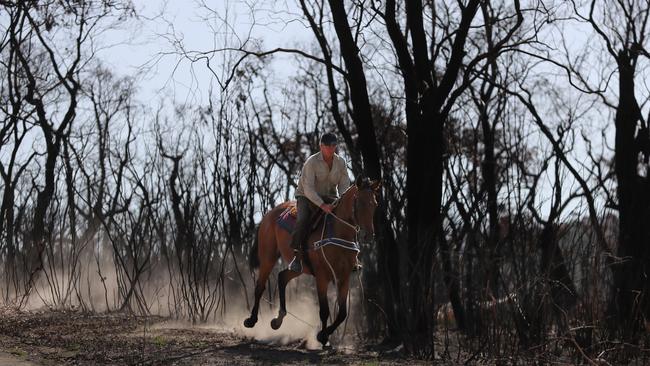
Firefree is the family’s horse of a lifetime. If all their farm had burned, not just the fences, the gritty hurdler would have been their only chance of getting back on their feet. They hope he can give Gippsland something to cheer about this season.
From the first time Peter Sandy “popped him over a few logs” while educating him five years ago, Jeffrey loved jumping. Now he has run in 58 races, winning six, placing 15 times and bringing in $280,000. He ran second in the Grand National Hurdle last season and fourth in the marathon Jericho Cup at Warrnambool.
He’s stepping up to steeplechases this year and stands to be an even bigger local hero in the hills where he was bred. If he wins the National or the Grand Annual, the TAB will have to send up an armoured car of cash to cover the bets. And the Sandys will be able to build new fences.
How Robyn Sandy sheltered Firefree at the Buchan footy ground is already part of local folklore. Especially the bit about her taking off her summer dress and wetting it to keep him cool when ammunition started exploding in a burning house nearby.
Meanwhile, her “boys” were rescuing the racecourse. The fire destroyed the judge’s box and most of the “rail” but they saved the jockeys’ room, horse stalls and bar.
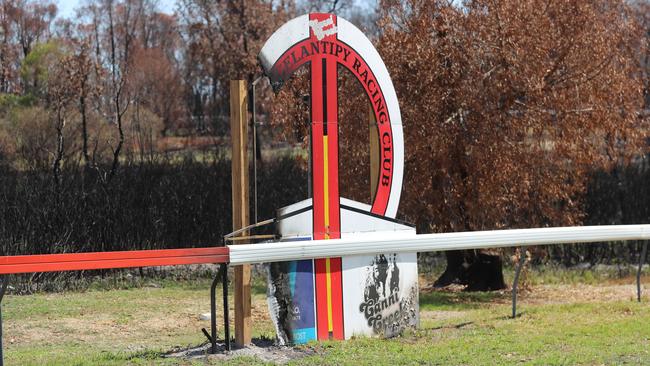
The winning post was scorched but still standing, an image that has caught on as a symbol of the resilience of fire-ravaged districts. Thanks to a generous donor, a plaque with a picture of Firefree and Robyn Sandy, fully dressed, will soon be fixed to the post.
To everyone’s relief, racing authorities have pulled the right rein, letting the locals patch up the track to run their own race meeting. Donations have flooded in: one from a group of city women racehorse owners; an even bigger one from Terry Henderson, a high-end syndicator who values grassroots racing.
There were rumblings about moving the February 15 meeting to one of the big towns closer to Melbourne but “picnics” don’t work like that. Take them to town and it kills the magic. The once-a-year races pull family and friends from all over Australia — but only if they are held at “home”.
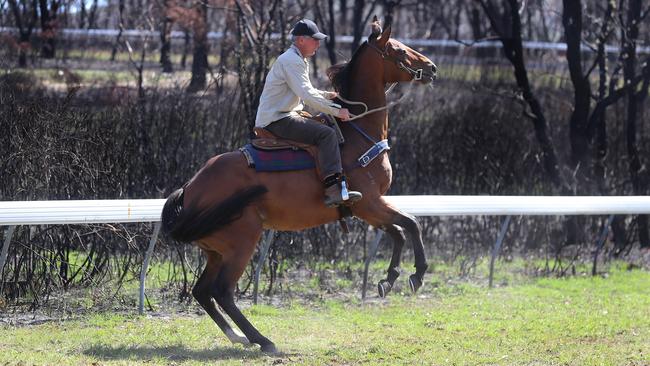
Buchan “picnics”, like the annual races at Swifts Creek and Hinnomunjie, now outdraw professional meetings at bigger centres. East Gippslanders have clung to their picnic races since the days when every tiny district had its own racecourse.
That explains why Canni Creek was the first racetrack this reporter ever stepped on to. Not many years later, I rode in a race there. I was 14, the horse only slightly younger. He was a retired city galloper, Shah Beau, pulled from the paddock for a few weeks to make a cameo appearance.
Shah Beau was trained by the king of the Gippsland picnic circuit, Alec Manning, who had borrowed him to make up the numbers. Alec won the race, and maybe two or three others that day. Alec was fitter than most horses and all amateur jockeys because he shore sheep five days a week and rode his gallopers “work” every morning.
All I had to do was not fall off — or get in Alec’s way. We ran third. There were four runners.
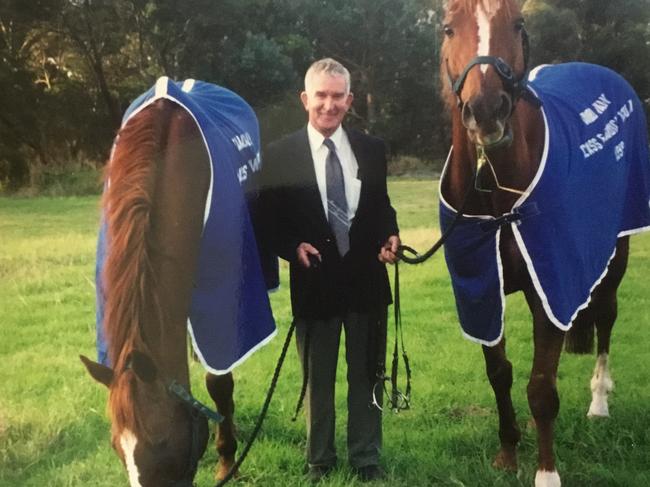
Someday, a filmmaker will study the box office success of Phar Lap, The Man from Snowy River and Ride Like A Girl and dream up a tear-jerking, nailbiting, adrenaline-charged, horse opera set in the high country. They could do worse than hang a plot around the true story of one of Alec Manning’s many picnic cup wins …
It’s Newmarket Handicap day, March 11, 1972. Roy Higgins rides five winners at Flemington, where A.C. Manning the shearer, picnic jockey and trainer, saddles his horse Shadowood and legs up one of the great jumps jockeys, Tom McGinley, for the hurdle.
Shadowood runs fourth, a good result for a bush horse trained along country roads and cow paddocks. Alec hands “Old Shadder” to a friend and rushes to Essendon Airport, where bush pilot Ben Buckley is waiting.
They fly across the ranges past Omeo, to land in the middle of the Hinnomunjie racecourse between races. The crowd cheers and waves beers.
Alec scrambles from the plane and runs to the ramshackle jockeys’ room. He puts on his “colours”, mounts his great picnic horse, High Gate, and wins the Omeo High Plains Cup. Rachel Griffiths couldn’t make it up.

That’s the thing about bush races and bushfires: they can bring out the best in people. Which brings us to the little boy lost.
Last Sunday, Jean Patrick Eveleigh went missing at Waterholes, a dot on the map in rough country between Buchan and Bairnsdale. His parents’ property had been burnt out and the four-year-old and his dad were camping in a caravan. Jean slipped away while his father was outside trying for phone reception.
That night, soldiers billeted at East Sale RAAF base were briefed. At dawn, they took off in helicopters but turned around because there was nowhere to land.
MORE NEWS
HYSTERIA MAKING BUSHFIRE CATASTROPHE WORSE
ARMY HELPS FIRE-RAVAGED TOWNS WITH HUGE CLEAN-UP
SATELLITE IMAGES SHOW AREAS LEFT BLACKENED BY BUSHFIRES
They commandeered vehicles and hit the road. By this time, the boy had been missing almost 20 hours and would be dehydrated and hungry, at best. The troops were briefed for a worst-case scenario.
The codeword if the boy was found alive was “Lighthorse”. If dead, “Charcoal”.
The Diggers fanned out in the bush, calling for the boy. They scrambled up and down hills for hours, dodging snakes and wombat burrows, knowing time was against them.
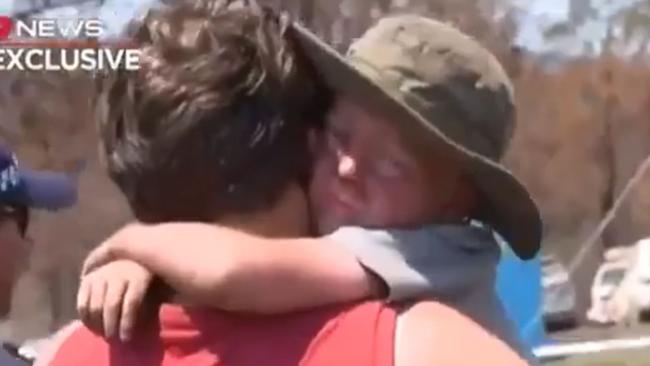

Then a yell went up midafternoon. Two searchers had found Jean, filthy, frightened and thirsty but alive after 26 hours.
“Light horse! Light horse! Light horse!” the soldiers yelled into their radios. In a split-second, the worst Australia Day of their lives turned into the best.
It is alleged that strong men shed a tear. It is also alleged they laughed later when they found they had got Jean’s name wrong and had spent all day calling out “Dean”.

